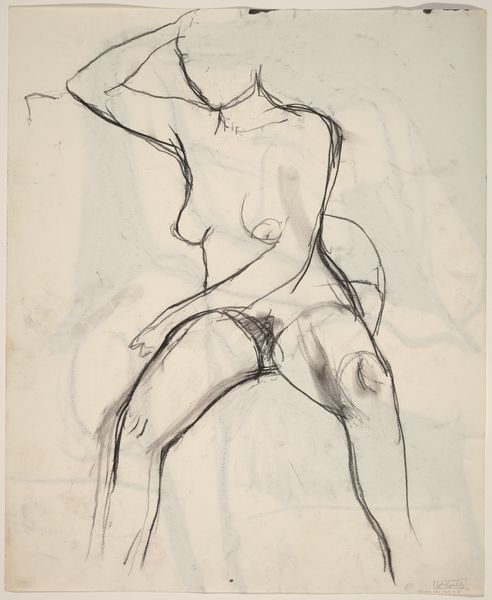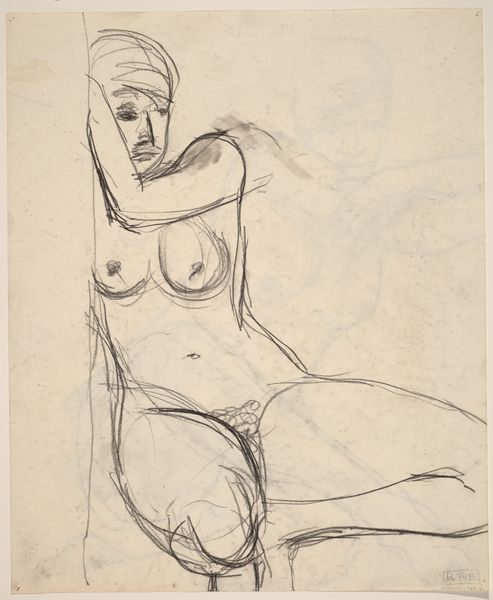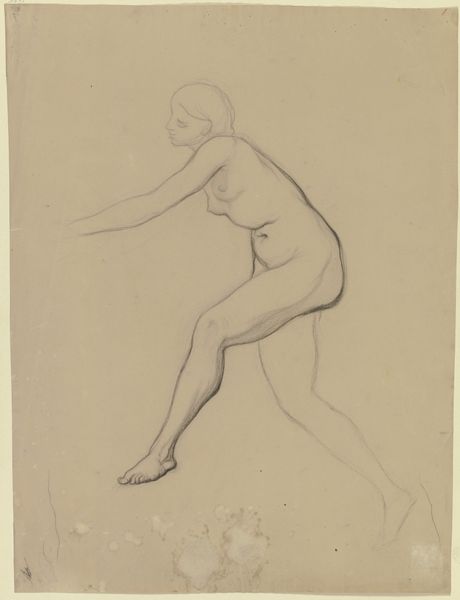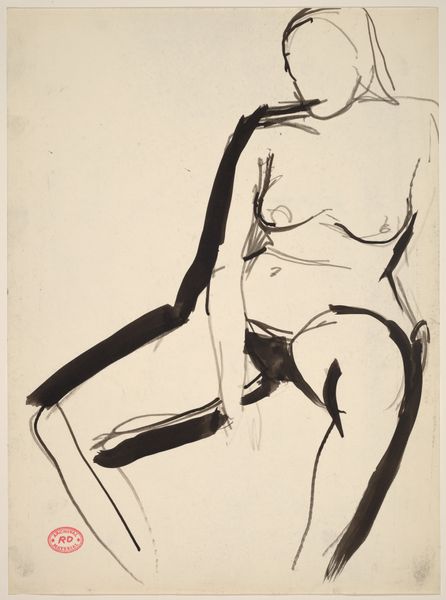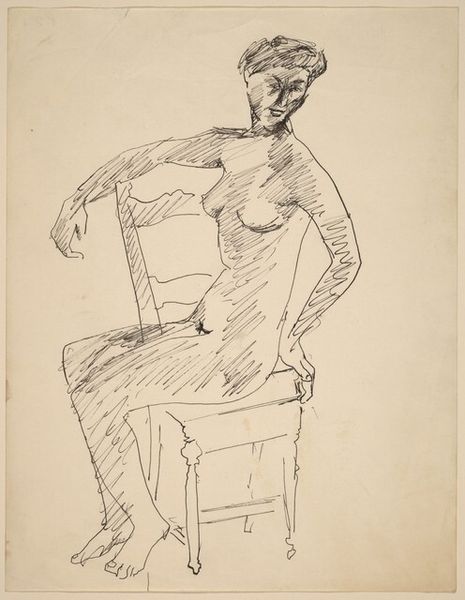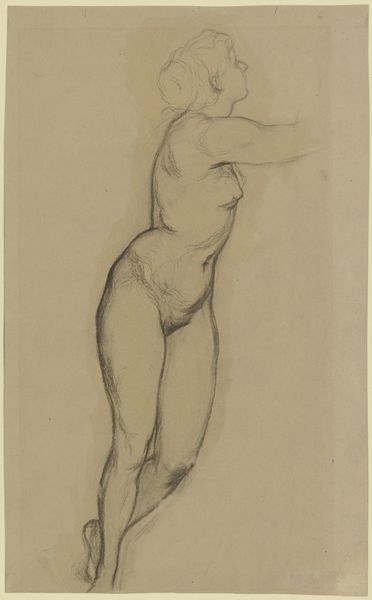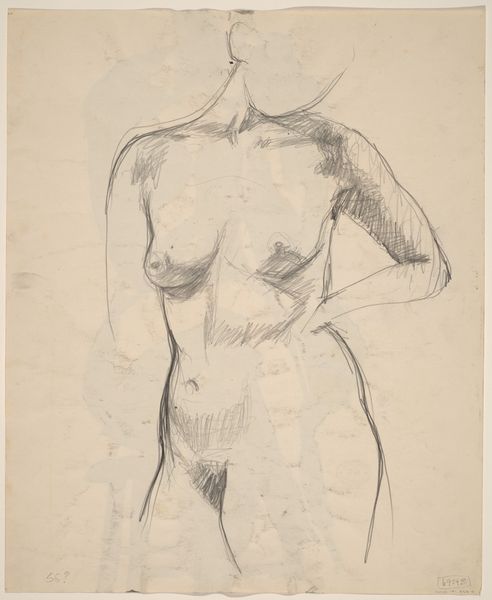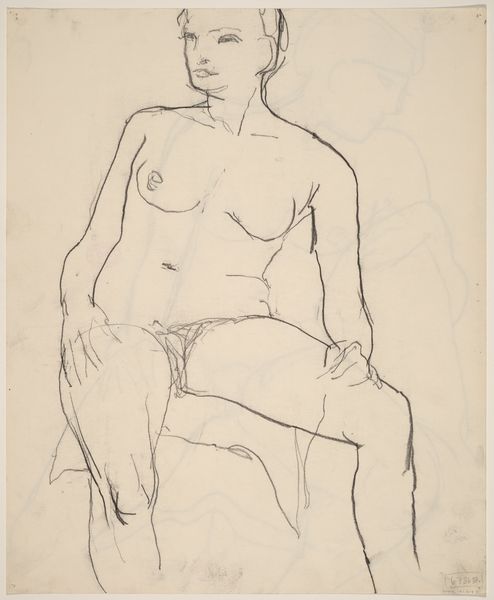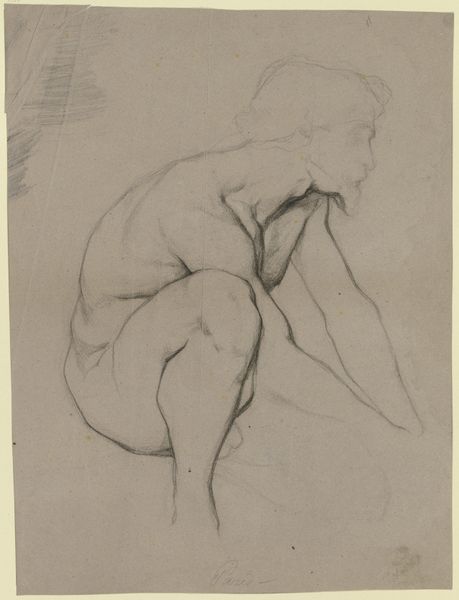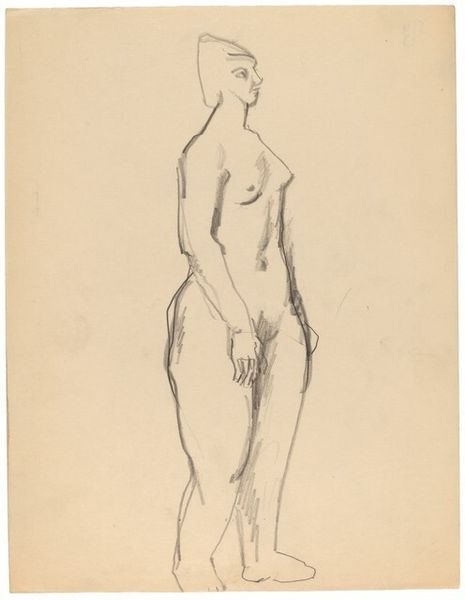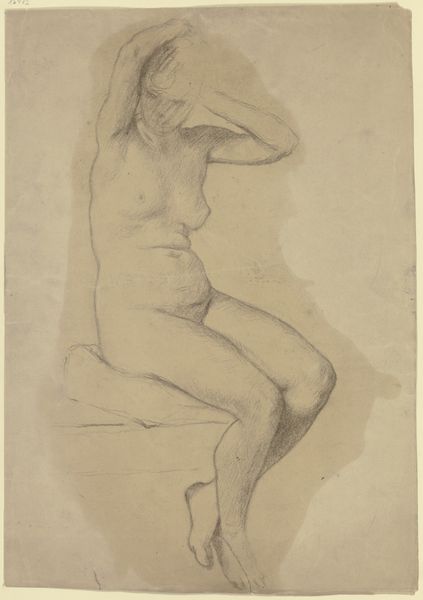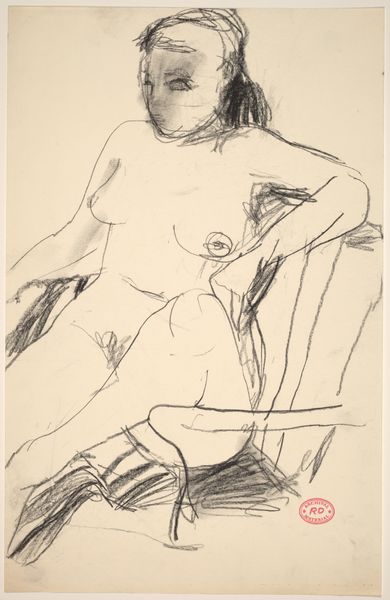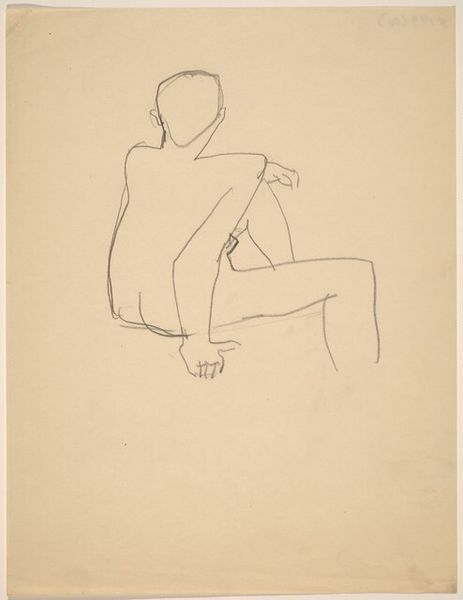![Untitled [seated female nude with left arm raised] by Richard Diebenkorn](/_next/image?url=https%3A%2F%2Fd2w8kbdekdi1gv.cloudfront.net%2FeyJidWNrZXQiOiAiYXJ0ZXJhLWltYWdlcy1idWNrZXQiLCAia2V5IjogImFydHdvcmtzL2YzNjQ5Y2Y5LWExNzctNGFlYi1iNzQ2LTkwYzFhNzdjY2NlZS9mMzY0OWNmOS1hMTc3LTRhZWItYjc0Ni05MGMxYTc3Y2NjZWVfZnVsbC5qcGciLCAiZWRpdHMiOiB7InJlc2l6ZSI6IHsid2lkdGgiOiAxOTIwLCAiaGVpZ2h0IjogMTkyMCwgImZpdCI6ICJpbnNpZGUifX19&w=3840&q=75)
Untitled [seated female nude with left arm raised] 1955 - 1967
0:00
0:00
drawing, pencil
#
drawing
#
ink drawing
#
figuration
#
bay-area-figurative-movement
#
pencil
#
abstraction
#
nude
#
modernism
Dimensions: sheet: 42.9 x 35.2 cm (16 7/8 x 13 7/8 in.)
Copyright: National Gallery of Art: CC0 1.0
Editor: This is an untitled pencil drawing by Richard Diebenkorn, created sometime between 1955 and 1967. It depicts a seated nude, rendered with a very spare, almost tentative line. The lack of a defined face is striking to me. What do you see in this piece, beyond the obvious? Curator: Well, immediately I’m drawn to the period in which this was made. Mid-century America was experiencing considerable shifts in its cultural values, especially around representations of the body. The female nude, historically loaded with symbolism and often catering to a male gaze, was being re-examined by artists like Diebenkorn. What do you think the absence of a distinct face might signify within that context? Editor: Maybe it's a way of desexualizing the figure, making her less of an object to be looked at, and more of a study in form? Almost like an academic exercise? Curator: Precisely. It certainly points to an intellectual engagement with the subject matter, moving away from idealized representations towards exploring abstraction. We also have to consider the social institutions of art; who was this work meant for? Was it a preparatory sketch for something larger, or was it intended for public consumption in this form? That impacts how we interpret it. Editor: I didn’t even think about that! Considering who the intended audience was definitely reframes my understanding of the piece. It feels more radical now. Curator: It invites us to consider the socio-political undercurrents of artistic expression and who had access to that expression at the time. By obscuring her features, Diebenkorn, perhaps unintentionally, gives us space to consider not only the subject, but the system within which that subject is being presented. Editor: This makes me think a lot differently about how seemingly simple sketches can reflect broader power dynamics. Thank you! Curator: It highlights the crucial role of social context in shaping artistic intention and interpretation, a reminder that art never exists in a vacuum.
Comments
No comments
Be the first to comment and join the conversation on the ultimate creative platform.
